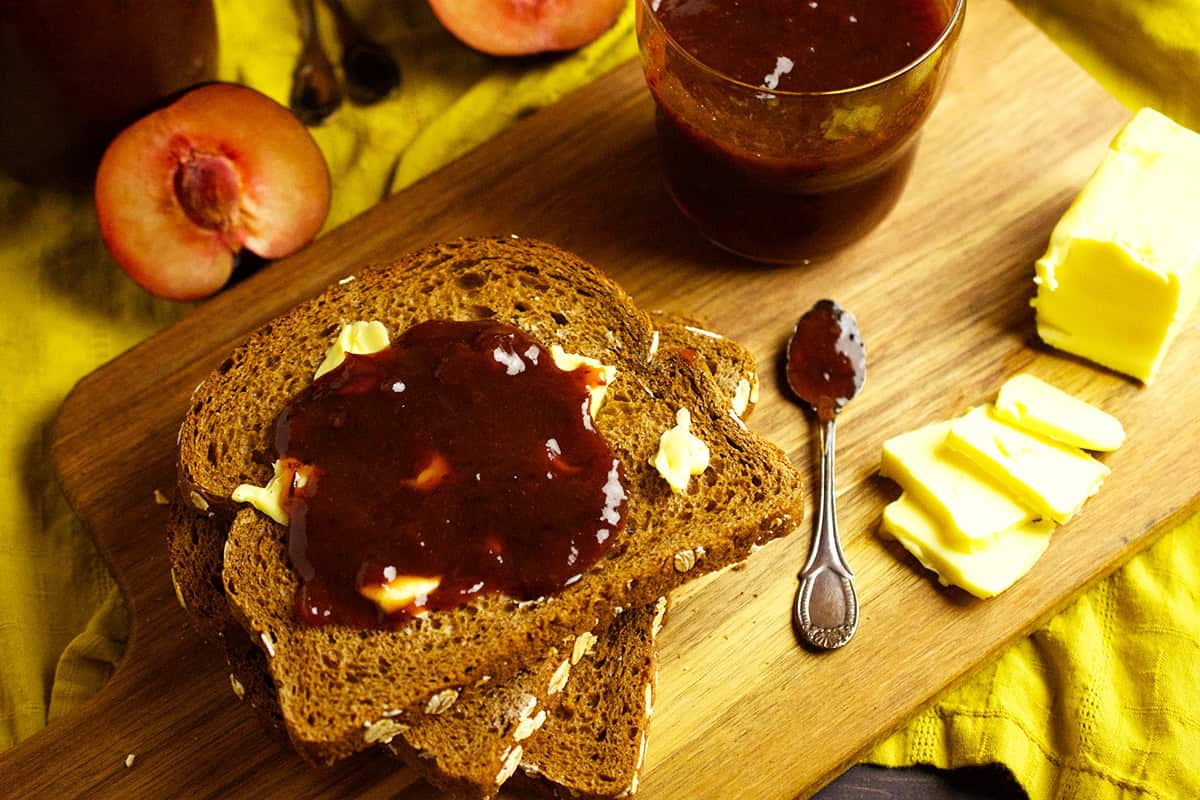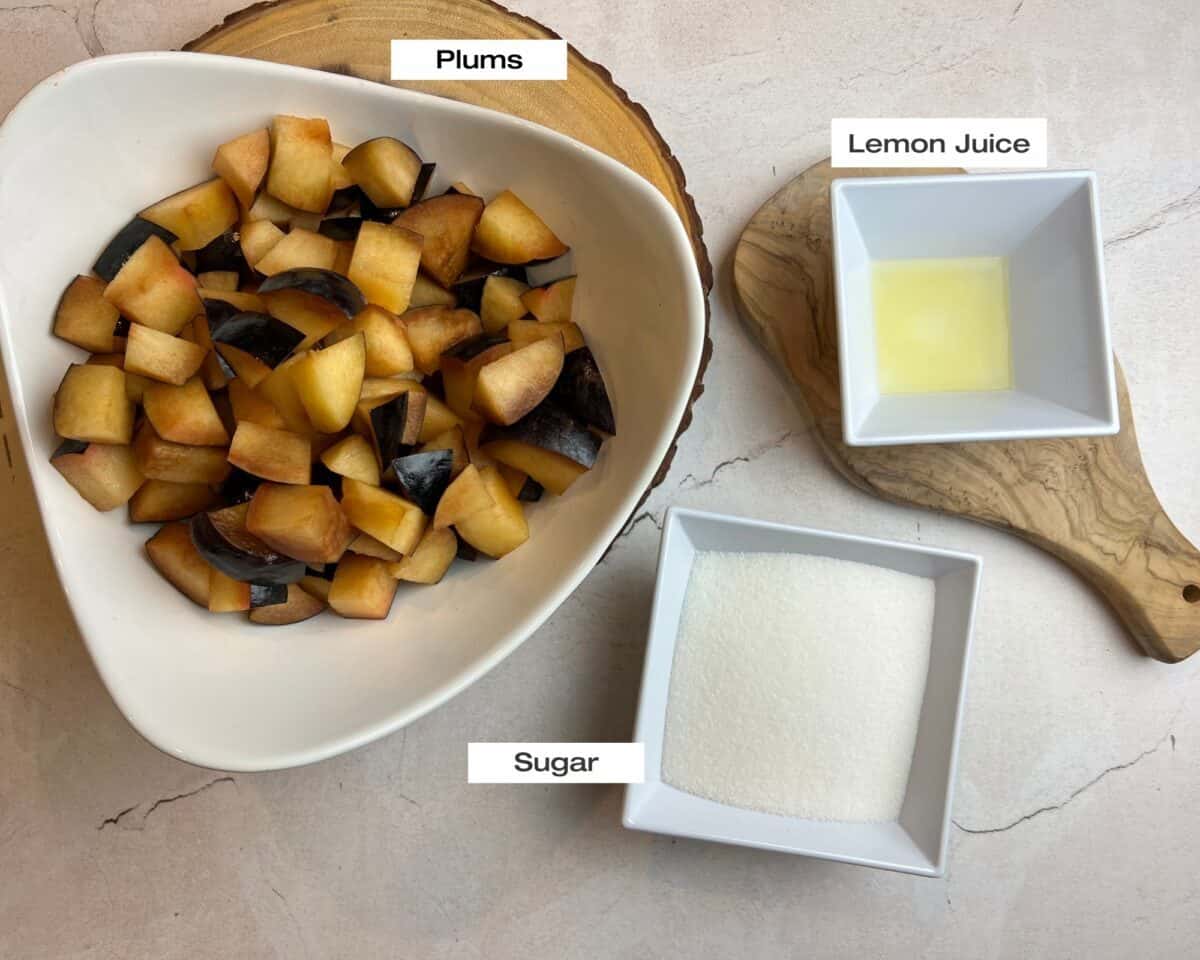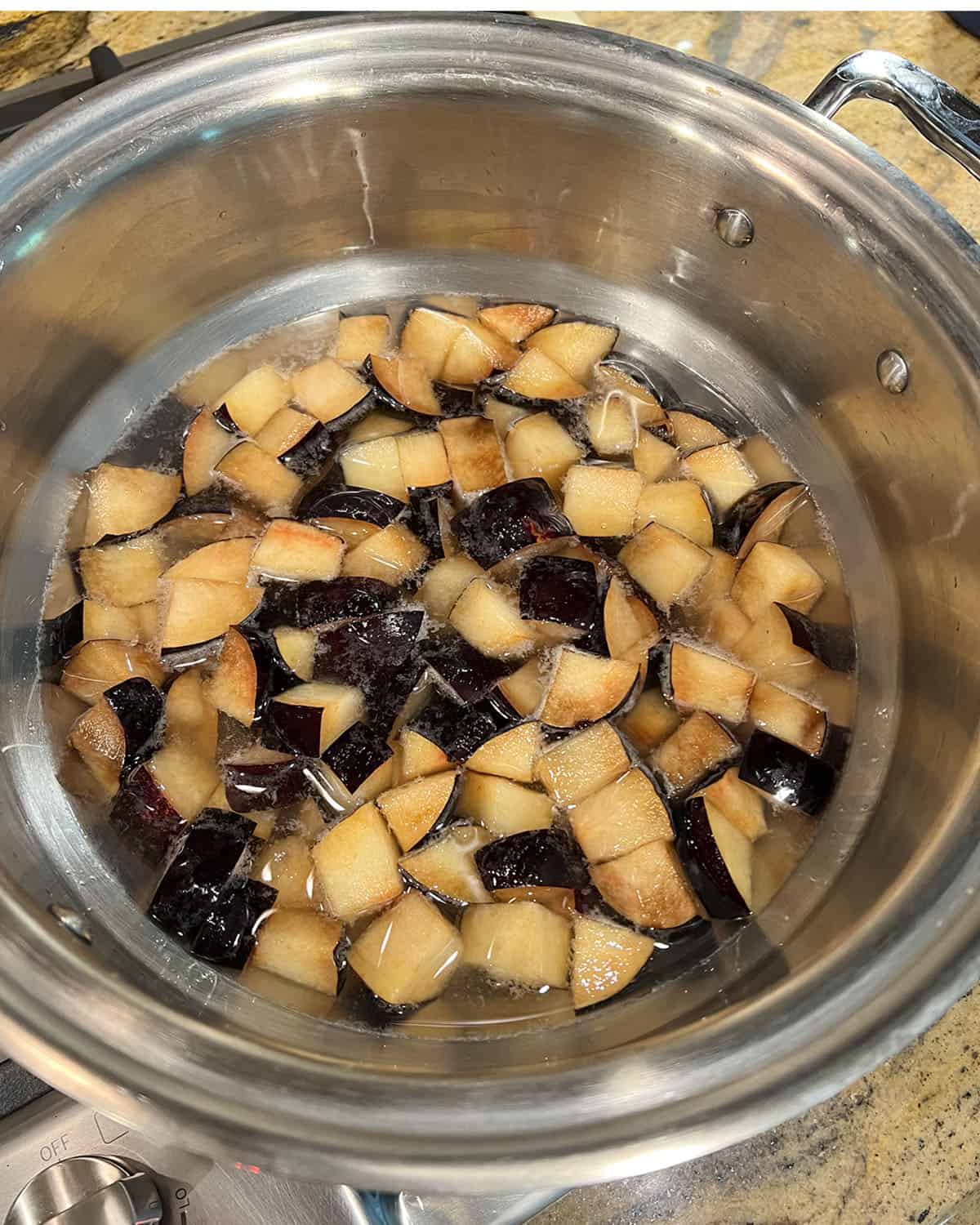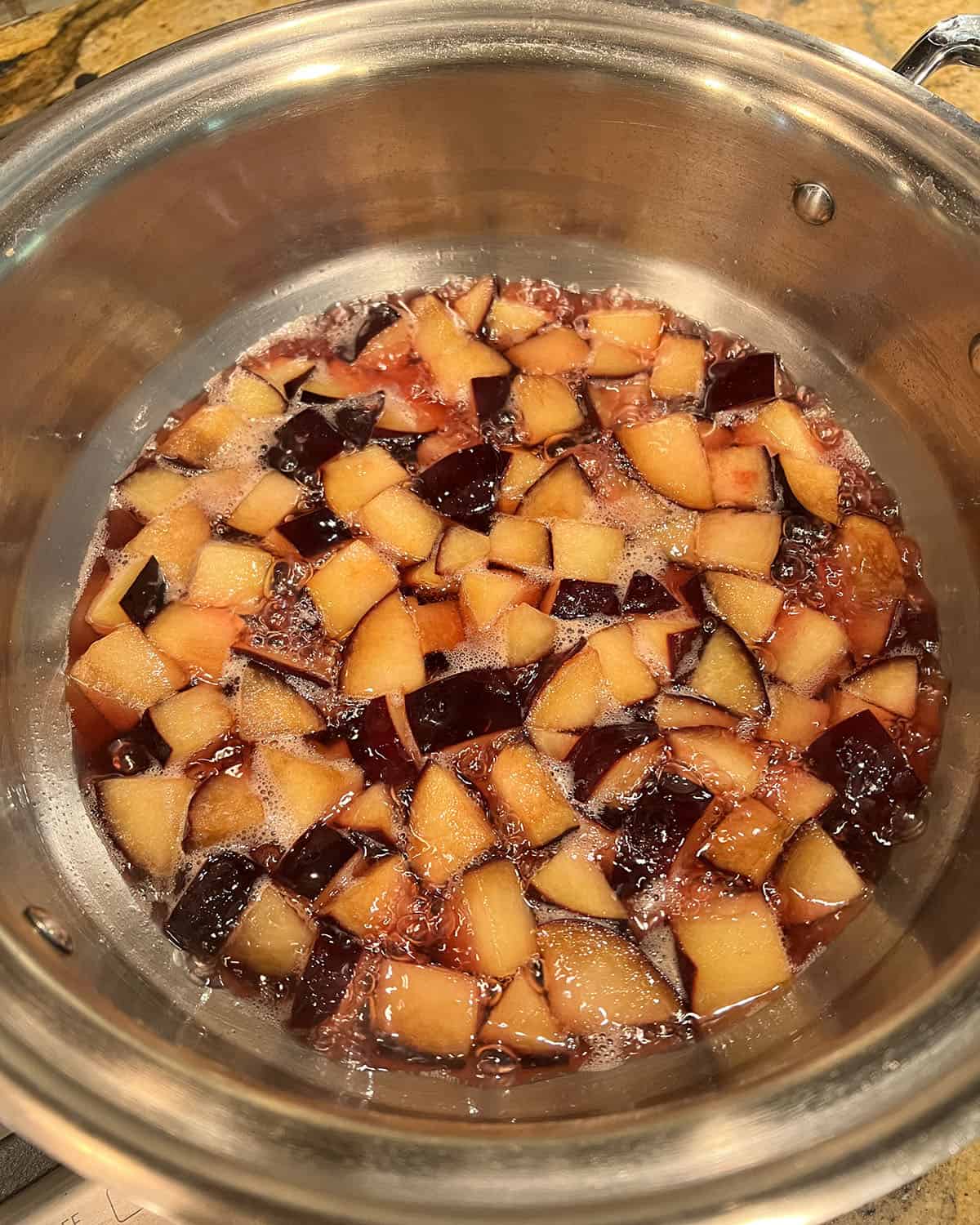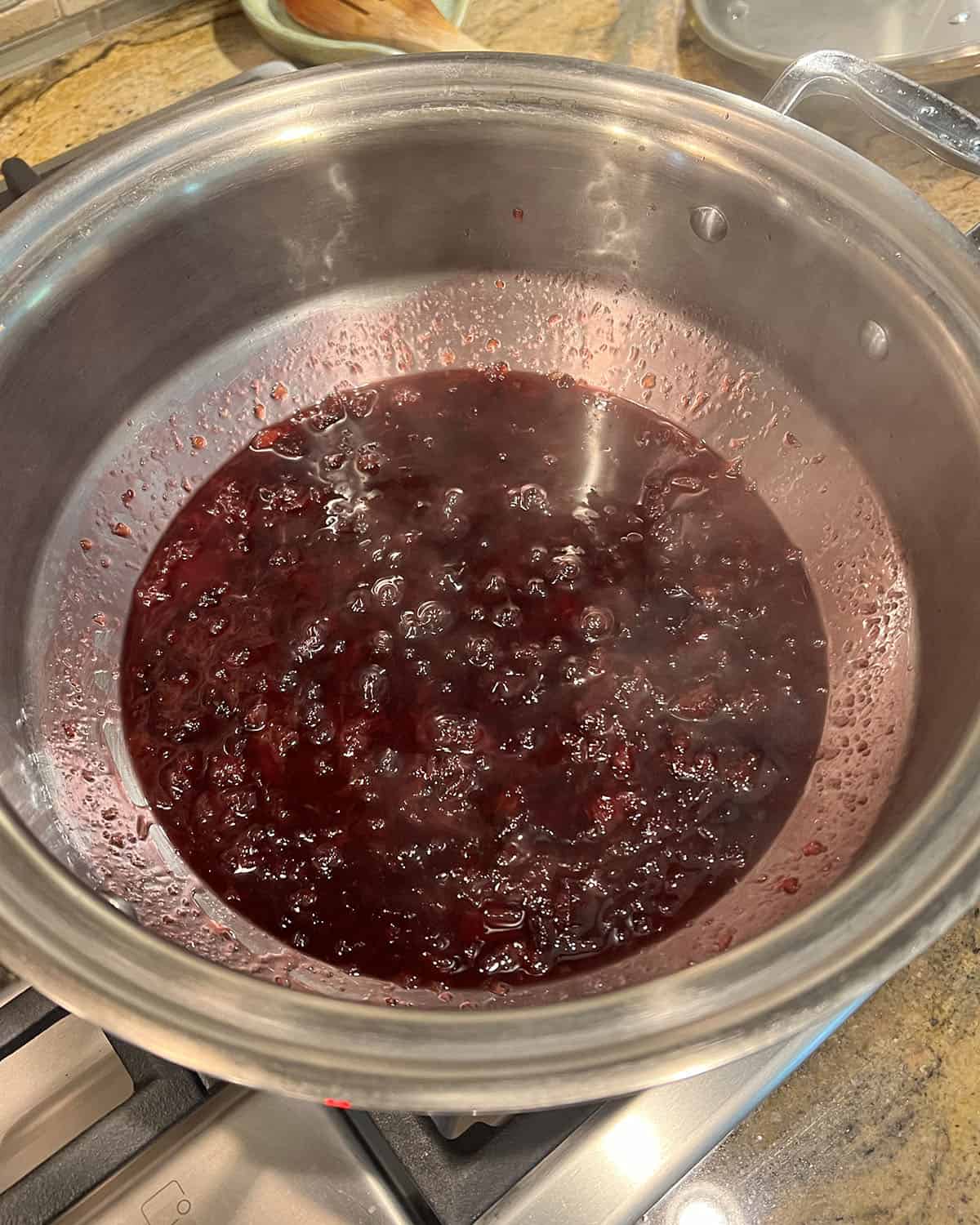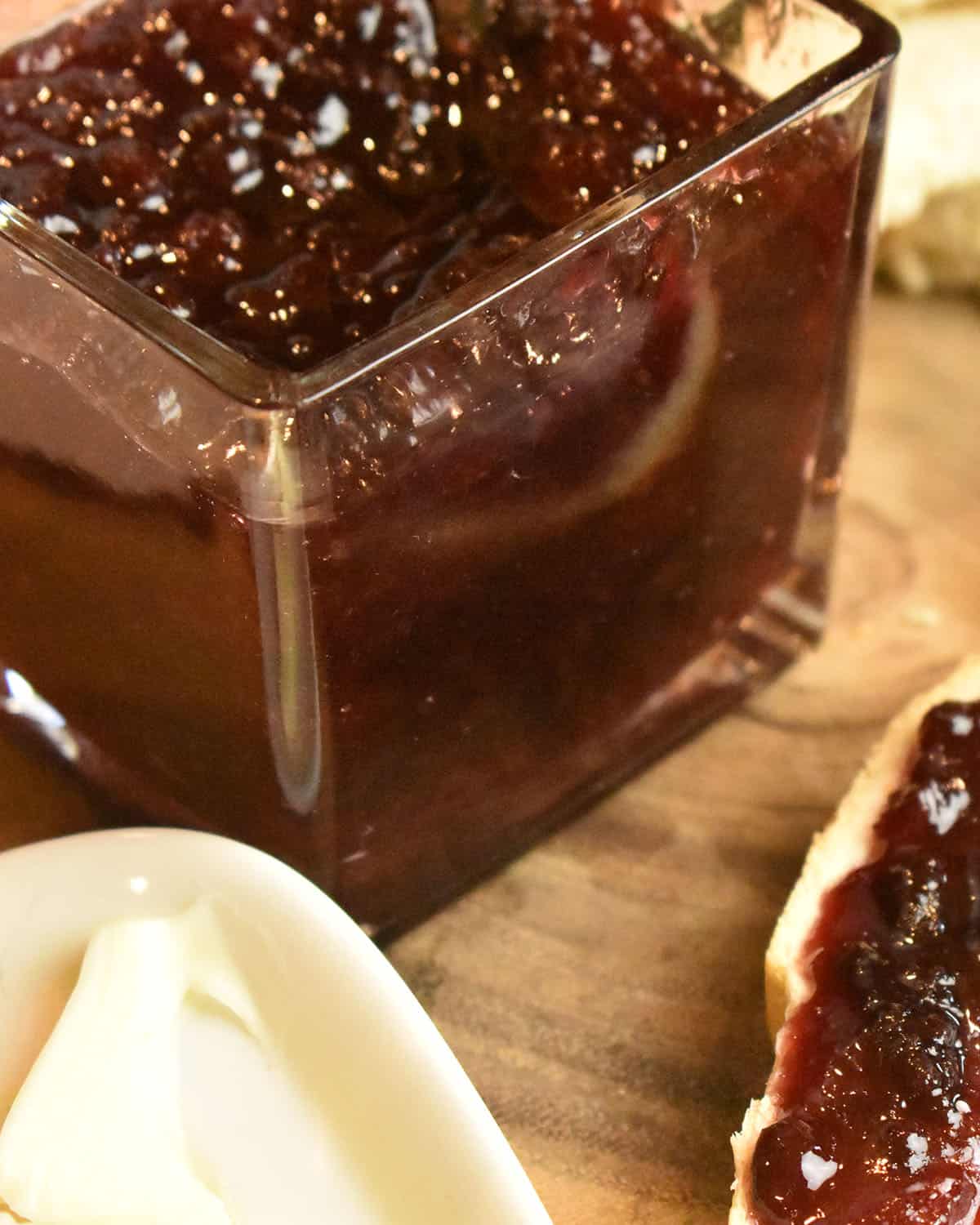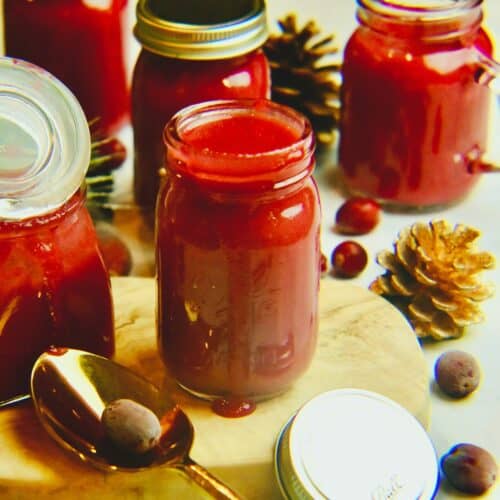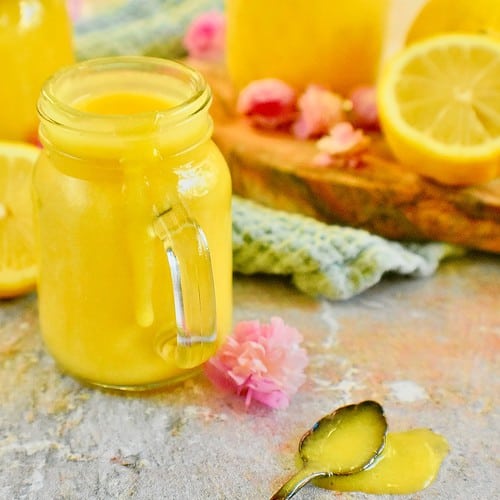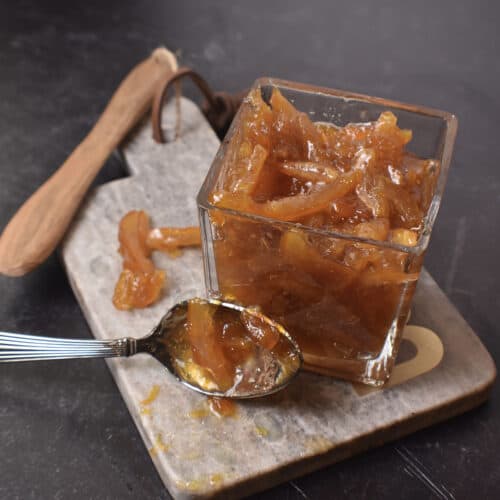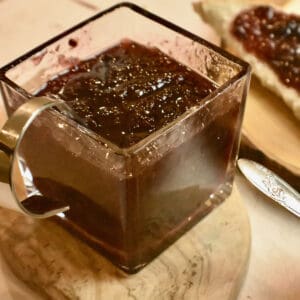In Pakistan, plums are known as Aloo Bukhara. Mainly red plums, Aloo Bukhara, grow in huge quantities in certain parts of Pakistan during the summer. Too many to consume, the plums are preserved in assorted different ways. Dried plums are used in many popular recipes, such as my Kashmiri great-grandmother’s gosht-aloo-bukhara (beef-curry-with-plums), chana dal gosht (meat & lentils curry), and best mutton biryani recipe. Making homemade plum jam or preserve is a summer tradition in my family, started by my mother.
Why you’ll love this recipe
Only 3 Ingredients - Who doesn’t love a recipe with just three ingredients? Just 30 minutes of active cooking time - This recipe involves very little prep and cooking. Your plum preserves will be ready for you to enjoy in no time! No preservatives - The natural pectin in plums and lemon juice means no artificial pectin is necessary for this recipe. So many different ways to enjoy this recipe - I enjoy my plum jam with toast for breakfast, on pancakes, crepes, cottage cheese, plain yogurt, French toast, ice cream, and as a tart filling. It also works great as part of a Charcuterie Board, especially around the holidays, and in a Ricotta Breakfast Parfait. Vegan, Gluten-Free, and Dairy-Free—This recipe suits all diet restrictions, making it perfect for serving guests or gifting jars to your family, friends, and neighbors!
The ingredients
Plums - During the summer, there is a wide variety of plums in all supermarkets and farmer’s markets. Some of the more well-known and popular ones are Red Plums, Yellow Plums, Black Plums, Italian Plums, and Wild Plums. I made this recipe using Black Plums, but I have used red and yellow plums, which all work well for this recipe. Sugar - Adding the right amount of sugar is key to the taste and consistency of this recipe. But how much sugar you decide to add depends on your personal preference. I like my jam a little sweet and sour, so I only add 1 cup of regular granulated sugar to about 2.5 lbs of plums. Most recipes call for 1 cup of sugar per pound of plums. Although I personally find that too sweet, you can try this ratio if you prefer. Lemon Juice - lemon juice contains so much pectin that desserts such as lemon posset can be made using zero gelatin yet set beautifully. Even though plums also contain pectin, a small amount of fresh lemon juice ensures that your jam will set quickly and perfectly.
Please see the recipe card at the bottom of this post for the complete list of ingredients with measurements plus recipe instructions.
Substitutions & variations
Make a smoother jam - If you prefer a smoother jam, use an immersion blender to make it puree. I like my jam slightly chunky, so I use a handheld masher instead. Infuse extra flavor - Infuse your preserves with some cinnamon, ginger, or cardamom for a slight change in flavor. Try the recipe with frozen plums - Frozen plums work great for this recipe. Use store-bought frozen plums or cut and freeze your own to make the jam later. Use another stone fruit - Try this recipe with peaches, apricots, or any other summer stone fruit. Make sugar-free plum jam - For a sugar-free version, substitute 1 cup of sugar with 1 cup of lantanko monk fruit sweetener.
Step-by-step instructions
The cooking technique for this recipe is as simple as the list of ingredients. Sterilize your jars, cook the jam, test for perfect consistency, and then bottle to use as needed.
Sterilize the jars
Before cooking your jam, use one of the following four methods to sterilize your jars.
The Boiling Method - Wash the half-pint jars in hot soapy water and boil them with the lids for 10 minutes. Turn the stove off and leave the jars as your jam cooks in the water. Remove the hot jars and fill them using a metal spoon once your jam is ready. The Oven Method - Wash the jars as with the other method, and then place the wet jars on a baking sheet in the oven. Bake at 275 degrees Fahrenheit for 10 minutes. Remove using oven mitts, and place on a cooling mat. Make sure to fill the jars while they are still warm. The Dishwasher - This is an easy way to sterilize jars if your dishwasher has a high heat setting. Run a short wash cycle at the highest temperature setting and keep the dishwasher closed to keep the jars warm till it’s time to fill them. Microwave - A less common and efficient method of sterilization is the microwave. Wash your jars and microwave them for 30 seconds to 1 minute. Make sure the jars are metal-free, and boil the lids separately.
Leave ½ inch of space when you fill the jars, seal them with the metal lids immediately, and bring the finished jam to room temperature before refrigerating.
Cook the jam
Start with perfectly ripe plums, wash them well, and cut them into small pieces, discarding the pits.
Test the jam
Finger Down the Spoon Test - I personally use this age-old technique! Once the jam is thick enough to coat my spoon, I run a finger down the middle to create a line. If it doesn’t fill back up with liquid, I consider the jam ready! Cold Plate Test - Many people like to use the cold plate test! For this, when you start cooking your jam, put a plate in your fridge to chill. Once you think your jam is thick enough to be done, take the plate out and put a teaspoon of the jam on it. The jam will instantly cool and thicken to the actual consistency it will be once cold. This will help you determine if it’s as thick as you want. Candy Thermometer - The 3rd and foolproof method is to use a candy thermometer. A regular thermometer such as this one from thermoworks.com will also work since it goes up to 220 degrees Fahrenheit. If you have a traditional meat thermometer, you must invest in a candy thermometer.
Expert tips
Always bottle the jam while the jars are warm - Make sure your cans are slightly warm when you pour the jam in. If the jars are cold, they may crack due to the high temperatures of the hot jam. For best results, check the latest canning guidelines - These always contain the best methods and latest techniques for sterilizing your jars. Use a candy thermometer - This will help you determine when your jam is at the perfect setting temperature of 220 degrees Fahrenheit. Prevent contamination - Use one spoon to scoop out the jam and a separate spreader for your toast to prevent the jam from spoiling.
